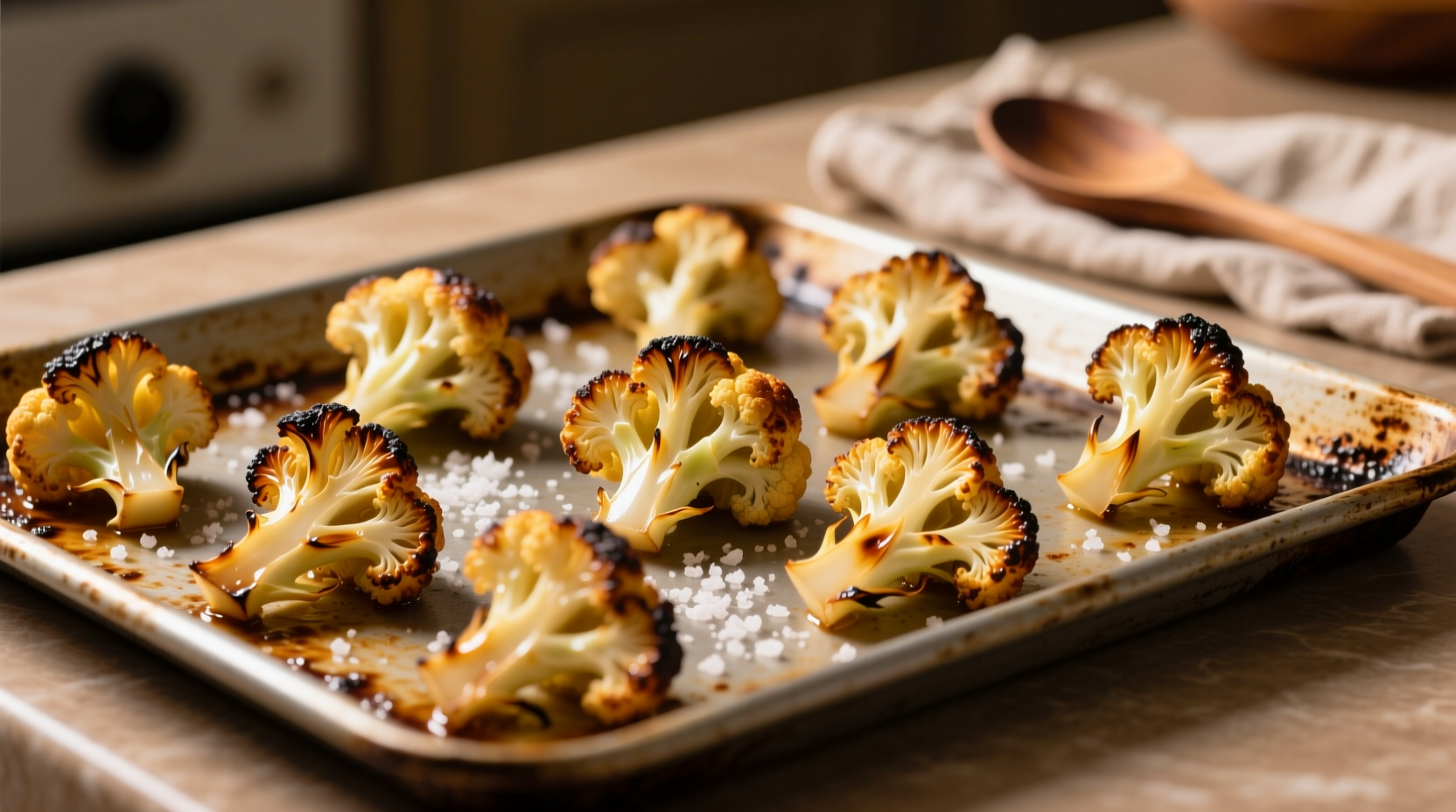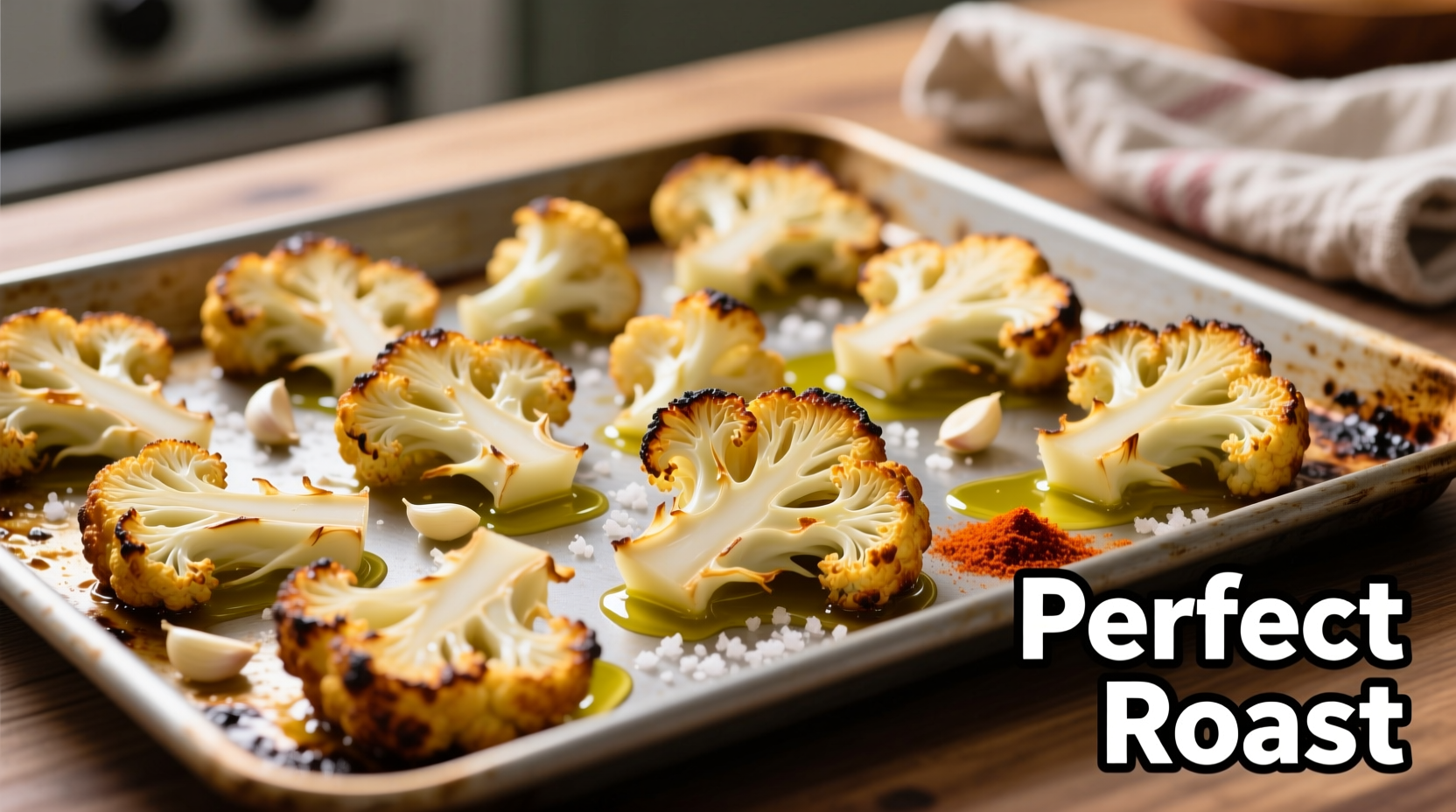Discover the simple science behind transforming humble cauliflower into a crispy, caramelized side dish that elevates any meal. This foolproof method guarantees restaurant-quality results with minimal effort—perfectly tender centers with irresistibly crispy edges every time. Whether you're meal prepping, seeking healthier vegetable options, or need a versatile side for weeknight dinners, mastering oven-roasted cauliflower unlocks endless culinary possibilities.
Why Oven Roasting Beats Other Cooking Methods
Unlike boiling or steaming that leaches flavor and nutrients, high-heat roasting triggers the Maillard reaction—the chemical process responsible for complex, savory flavors and appealing golden-brown color. According to research from the Culinary Institute of America, dry-heat methods like roasting preserve 25% more vitamin C in cruciferous vegetables compared to boiling. The intense oven heat dehydrates the exterior just enough to create that coveted crispy texture while maintaining a moist, tender interior.
| Roasting Temperature | Texture Result | Optimal Timing | Best For |
|---|---|---|---|
| 375°F (190°C) | Soft with minimal browning | 25-30 minutes | Meal prep, casseroles |
| 400°F (205°C) | Evenly tender with light browning | 22-25 minutes | General purpose roasting |
| 425°F (220°C) | Crispy edges, creamy center | 20-25 minutes | Standalone side dish |
| 450°F (230°C) | Deeply caramelized, slightly charred | 18-22 minutes | Steakhouse-style presentation |
Essential Preparation Techniques
Proper preparation makes the difference between soggy disappointment and roasted perfection. Start with a fresh head of cauliflower featuring tight, creamy-white curds and crisp green leaves—avoid any with yellowing or soft spots. When cutting, remove the outer leaves first, then slice vertically through the core to maintain floret integrity. For even cooking, aim for uniform 1-inch pieces; smaller pieces burn while larger ones remain undercooked.
The oil-to-cauliflower ratio is critical: use exactly 1½ tablespoons of high-smoke-point oil (like avocado or light olive oil) per pound of cauliflower. Toss thoroughly in a large bowl until every surface glistens—this thin oil coating conducts heat efficiently for maximum browning. Season after oiling to prevent salt from drawing out moisture prematurely.

Perfect Roasting Process
Arrange florets in a single layer with space between pieces on a parchment-lined baking sheet—crowding causes steaming instead of roasting. For optimal airflow and browning, use two sheets if necessary rather than stacking. Place the sheet in the center rack of your preheated oven and set a timer for 12 minutes.
At the halfway point, flip each piece carefully using tongs. This exposes fresh surfaces to direct heat, creating all-around crispiness. Continue roasting 8-13 minutes until deeply golden and tender when pierced with a fork. Remove immediately—residual heat continues cooking the cauliflower. For extra flavor, finish with lemon zest or a drizzle of balsamic reduction while still warm.
Troubleshooting Common Problems
Soggy cauliflower? You likely used too much oil or overcrowded the pan. Reduce oil by 25% and ensure 1¼ inches between florets. Burnt edges? Lower oven temperature by 25°F and check 5 minutes earlier. Uneven cooking? Rotate the baking sheet 180 degrees at the halfway mark for consistent heat exposure.
For moisture control, spread roasted cauliflower on a wire rack immediately after cooking. This prevents steam buildup underneath that causes sogginess. If reheating leftovers, use a 400°F oven for 5-7 minutes rather than microwaving to restore crispness.
Flavor Variations and Serving Ideas
Elevate your roasted cauliflower with these chef-approved combinations:
- Mediterranean: Toss with garlic powder, dried oregano, and crumbled feta after roasting
- Spicy Harissa: Mix 1 teaspoon harissa paste with the oil before coating
- Lemon-Parmesan: Finish with grated Parmesan and lemon juice
- Curry Coconut: Sprinkle with curry powder and toasted coconut flakes
Serve as a side with roasted chicken or fish, blend into a creamy soup, or chop finely for grain bowls. Leftovers keep refrigerated for 4 days—revive in the oven for meal prep lunches.
Frequently Asked Questions
Should I parboil cauliflower before roasting?
No parboiling needed. Raw cauliflower develops superior texture and flavor when roasted directly. Parboiling creates excess moisture that prevents proper browning and leads to mushy results.
How do I prevent cauliflower from burning?
Use 425°F as maximum temperature, maintain proper spacing between florets, and flip halfway through cooking. Check 3-5 minutes before expected finish time, as oven temperatures often vary.
Can I roast frozen cauliflower?
Thaw completely and pat dry first. Frozen cauliflower releases excess water that steams instead of roasts. For best results, use fresh cauliflower as frozen versions often become mushy when roasted.
What's the ideal size for cauliflower florets?
1-inch pieces provide perfect balance—large enough to maintain structure but small enough to cook through in 20-25 minutes. Smaller pieces burn while larger ones remain undercooked in the center.











 浙公网安备
33010002000092号
浙公网安备
33010002000092号 浙B2-20120091-4
浙B2-20120091-4